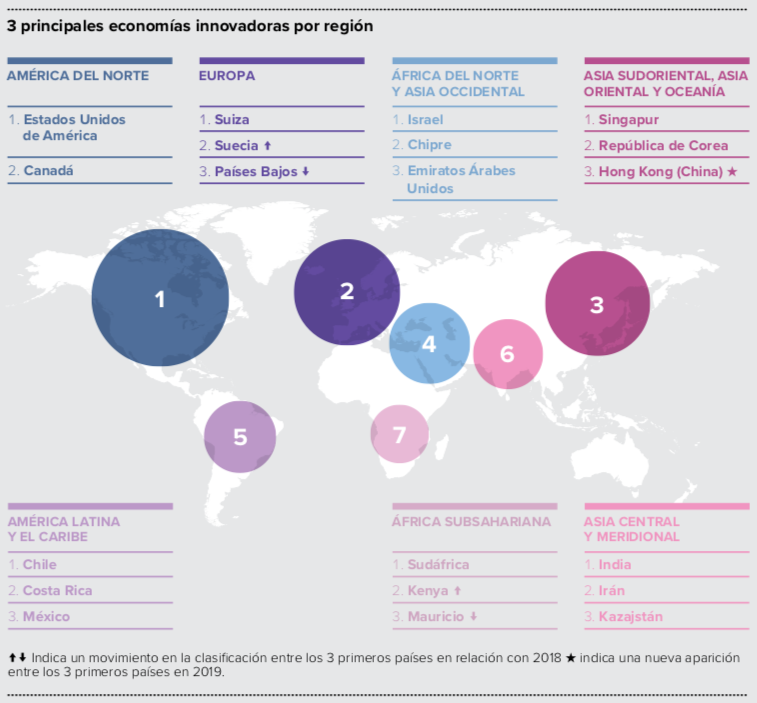Switzerland is the world’s most-innovative country followed by Sweden, the United States of America, the Netherlands and the United Kingdom, according to the 2019 edition of the Global Innovation Index (GII).
Outside of Europe and North America, regional GII innovation leaders are India, South Africa, Chile, Israel and Singapore. In addition, China, Viet Nam and Rwanda top their income groups.
 De Hallazgos Clave (en español).
De Hallazgos Clave (en español).
Richer countries, on average, perform better in the GII. Still, a select number of economies stand out as they perform better than what their level of economic development would predict:
- India, Viet Nam, Kenya, and the Republic of Moldova are part of this group of innovation outperformers for the ninth consecutive year – a record – while Africa stands out as the region with the largest number of outperforming economies.
- Other middle-income economies that do well relative to their level of development are: Costa Rica – the only country in Latin America and the Caribbean to do so – Georgia, the Philippines, South Africa, and Thailand.
- Other Sub-Saharan countries which outperform are Rwanda, Mozambique, Malawi and Madagascar.
Key findings in brief
- Amid economic slowdown, innovation is blossoming around the world; but new obstacles pose risks to global innovation.
- Shifts in the global innovation landscape are materializing; some middle-income economies are on the rise.
- Innovation inputs and outputs are still concentrated in very few economies; a global innovation divide persists.
- Some economies get more return on their innovation
investments than others.
- Shifting focus from innovation quantity to innovation
quality remains a priority.
- Most top science and technology clusters are in
the U.S., China, and Germany; Brazil, India, Iran, the Russian Federation, and Turkey also make the top 100 list.
- Creating healthy lives through medical innovation requires more investment in innovation and increased diffusion efforts.
